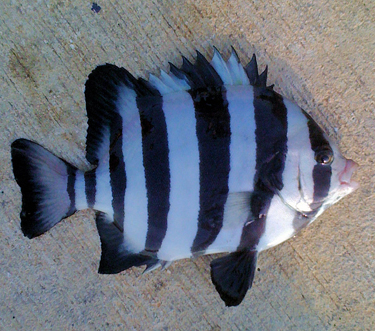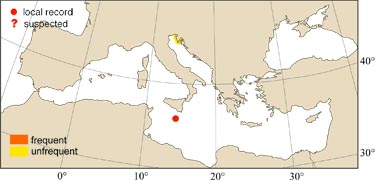
|
Relevant synonyms
Misidentification
Meristic formula
|
|
| photo : J. Attard |
|
SHORT
DESCRIPTION
color : young specimens with seven black vertical bars on a bluish-grey background. The first four bars approximately the same width as the intervals between them. Last three bars much narrower. The soft rays portions of dorsal, anal and the entire ventral fin are black. Large specimens become brown-grey, the bars faint or completely absent.
size : common 10-50 cm (max. 80 cm). |
DISTINGUISHING CHARACTERISTICS
BIOLOGY / ECOLOGY
habitat : coastal rocky substrate. |
|
1st
MEDITERRANEAN RECORD
|

|
|
DISTRIBUTION
|
ESTABLISHMENT SUCCESS
speculated reasons for success :
|
|
|
MODE OF
INTRODUCTION |
IMPORTANCE TO
HUMANS |
|
KEY
REFERENCES
|